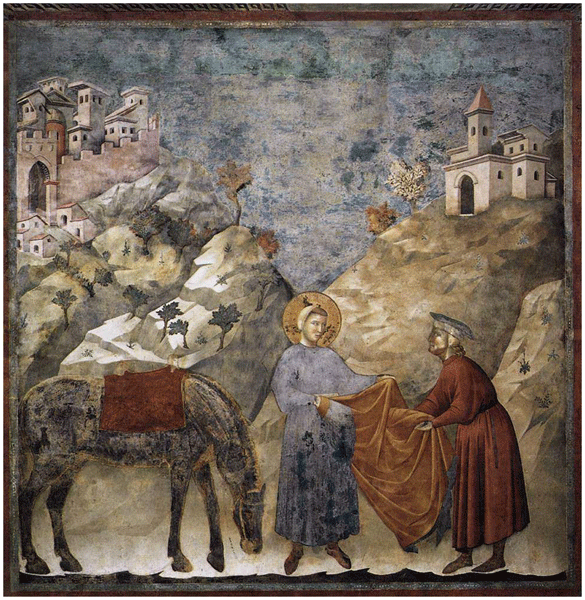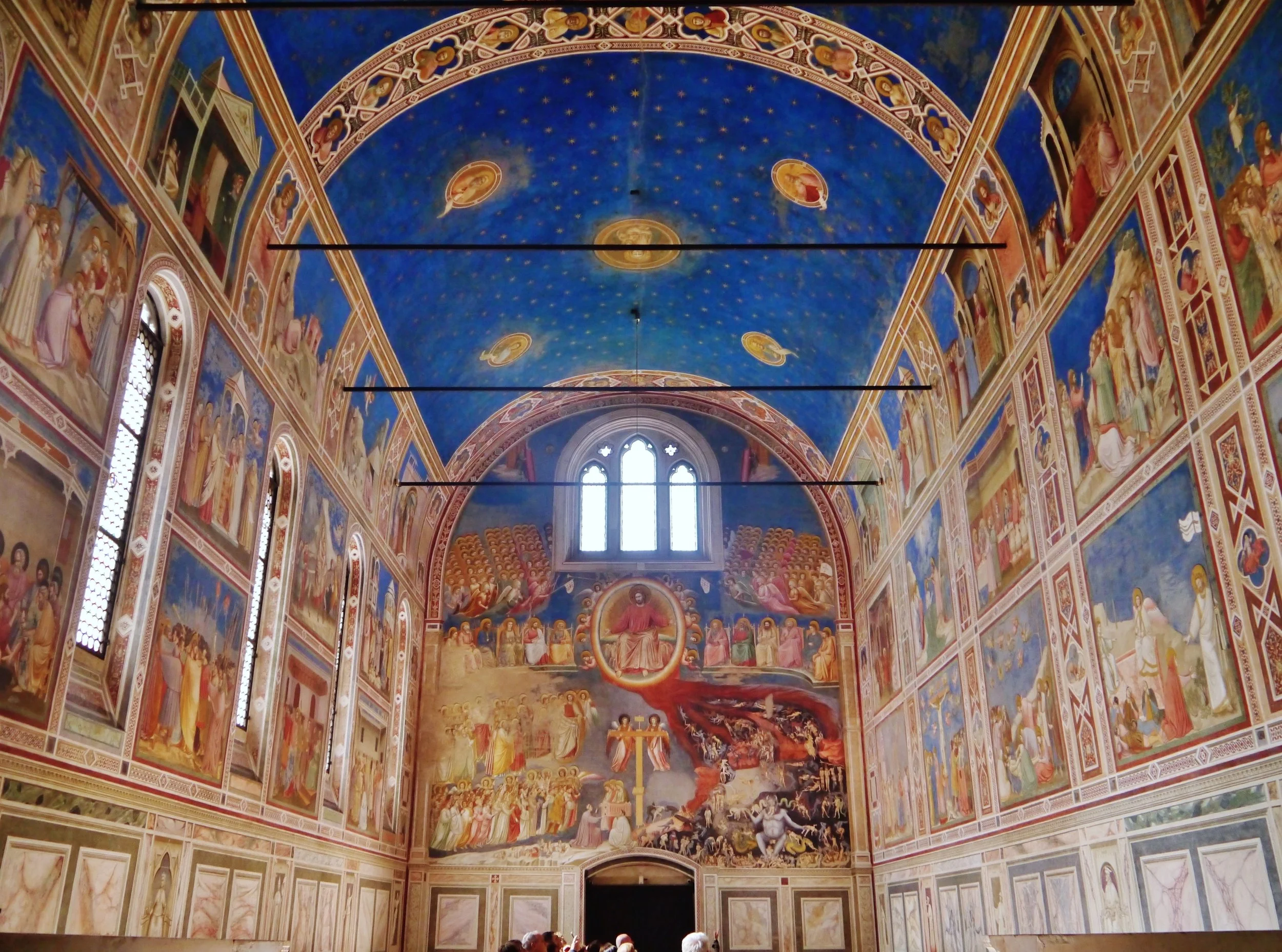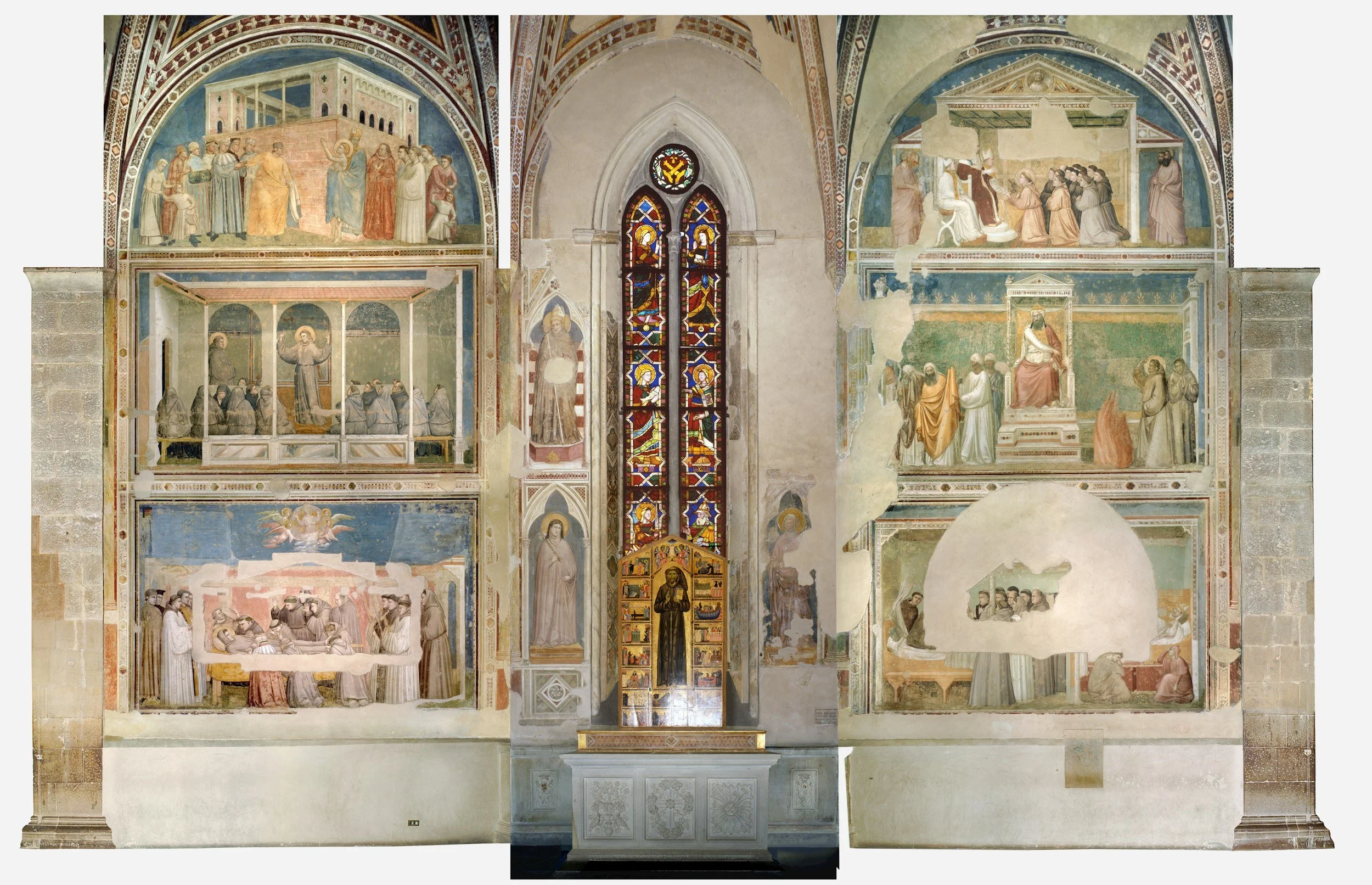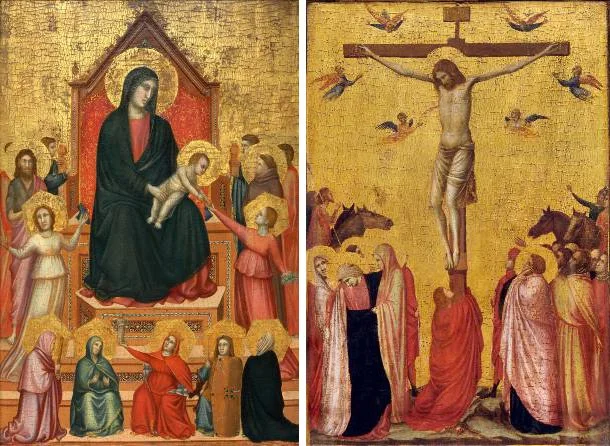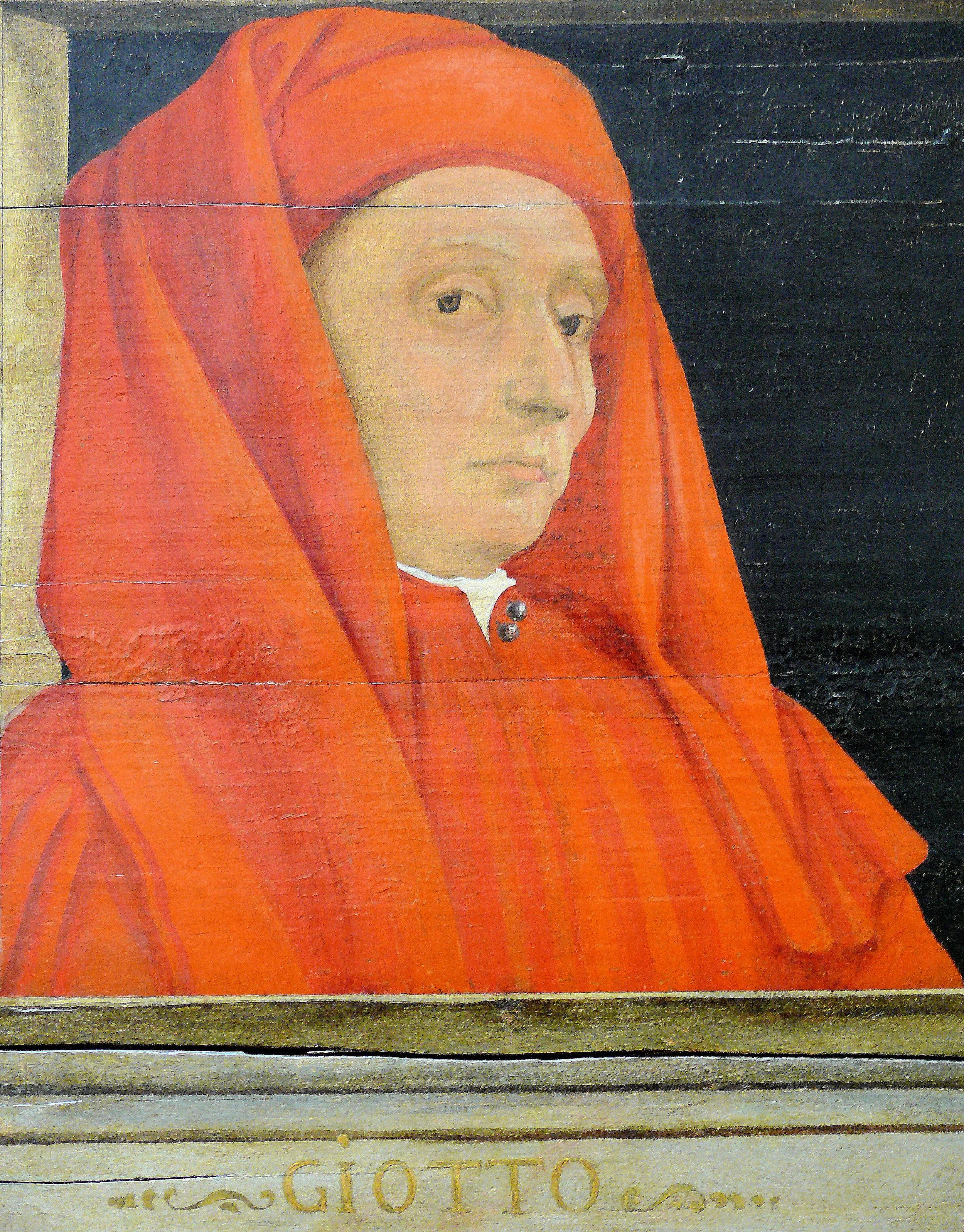Exploring Giotto Italy: Masterpieces and Legacy of a Renaissance Icon
Giotto di Bondone, a trailblazer in Italian art, changed the course of painting in Italy with his realistic approach. Born near Florence, Giotto’s masterpieces, like the Arena Chapel frescoes, set the stage for the Renaissance. This article explores Giotto’s life, his key works, and his significant impact on art in Giotto Italy.
Key Takeaways
Giotto di Bondone, an influential figure in the transition from Byzantine to Renaissance art, was discovered by Cimabue and trained in Florence, where he developed a naturalistic style that revolutionized artistic representation.
Debates surrounding the authorship of the Assisi frescoes underscore Giotto’s impact on art history, highlighting themes of naturalism and perspective that characterize his work and influence subsequent generations of artists.
Giotto’s extensive contributions, including the frescoes in the Arena Chapel and Santa Croce, as well as his role as an architect, established him as a pivotal figure in both painting and architecture, leaving a lasting legacy on the development of Western art.
Origins and Early Life
Giotto di Bondone was born around 1267 in Colle di Vespignano, near Florence, a region pivotal to his artistic development. As a young shepherd, Giotto displayed a remarkable talent for drawing, catching the eye of the renowned painter Cimabue. According to legend, Cimabue discovered Giotto sketching a lifelike image of la pecora di giotto on a stone, an encounter that would change the course of art history.
Under Cimabue’s mentorship, Giotto apprenticed in Florence from around 1280 to 1290, a period crucial for his artistic growth. Cimabue believed Florence, brimming with artistic and intellectual vitality, provided the ideal backdrop for Giotto’s burgeoning talents. The skills and techniques he acquired laid the foundation for his future masterpieces, helping him move away from the rigid Byzantine style.
Giotto’s early life and training, influenced by Giotto’s father, shaped his unique approach to giotto’s work during giotto’s lifetime. His ability to observe and capture the natural world with accuracy, drawing accurately, set him apart from his contemporaries, foreshadowing the revolutionary changes he would bring to art, including burlington magazine and giotto’s masterwork.
This early foundation defined his career and paved the way for the Renaissance, influencing countless artists who followed him.
The Assisi Frescoes Debate
A contentious aspect of Giotto’s legacy is the debate surrounding the Assisi frescoes. Scholars have long debated whether these frescoes, which depict scenes from the life of Saint Francis, were created by Giotto himself or by his workshop. This debate is not merely academic; it has significant implications for our understanding of Giotto’s influence on the Italian Renaissance and the francis frescoes.
The several frescoes showcase an evolving style that might include both Giotto’s techniques and those of his followers, as well as other frescoes. Technological advancements have allowed researchers to analyze the fresco cycle with unprecedented precision, revealing details about the materials and methods used. These studies aim to clarify the frescoes’ origins and potentially settle the debate.
Identifying the true authorship of the Assisi frescoes is essential. It impacts Giotto’s legacy and the broader narrative of art history during this period. The frescoes’ stylistic elements, such as the naturalistic portrayal of figures and the use of perspective, are hallmarks of Giotto’s work and represent a significant shift from the earlier Byzantine style. Whether created by Giotto or his workshop, these frescoes remain a testament to the transformative period he helped usher in.
Masterpieces in Padua: The Arena Chapel
Among Giotto’s celebrated works are the famous frescoes in the Arena Chapel in Padua, completed around 1305. Commissioned Giotto by the wealthy patron Enrico Scrovegni, the chapel was intended to atone for the sins of usury, ensuring salvation for Scrovegni and his family. The frescoes, including the Lamentation, are considered some of Giotto’s supreme masterpieces.
The Lamentation fresco, painted between 1304 and 1306, poignantly depicts Christ surrounded by mourners. This work exemplifies Giotto’s skill in conveying deep emotional expressions and naturalistic details, marking a departure from the flat, stylized figures of Byzantine art. The frescoes in the Arena Chapel collectively showcase Giotto’s groundbreaking approach to narrative, composition, and realism.
Giotto’s work in the Arena Chapel marks a pivotal moment in art history, signifying a shift towards more naturalistic and expressive representations. This transformation laid the groundwork for the Renaissance, influencing countless artists and setting new standards for artistic excellence. The Arena Chapel remains a testament to Giotto’s innovative spirit and his profound impact on the development of Western art.
Contributions to Santa Croce
Giotto’s contributions to the Santa Croce in Florence exemplify his mastery and influence. The santa croce frescoes in the Bardi Chapel, depicting the saint’s life of Saint Francis, are characterized by simplicity and clarity reminiscent of his earlier works in Padua. These frescoes reflect Giotto’s ability to humanize his subjects, portraying Saint Francis without a beard, a detail favored by the Franciscan rule to emphasize the saint’s humble and approachable nature.
In the Peruzzi Chapel, Giotto painted scenes from the lives of Saint John the Baptist and Saint John the Evangelist. These frescoes are notable for their dynamic compositions and the varied emotional reactions of the figures. Giotto’s naturalism and focus on capturing human emotion set these works apart, showcasing his evolution as an artist and his ability to convey complex narratives.
While the Bardi Chapel frescoes were executed using the true fresco technique, the Peruzzi Chapel frescoes were painted a secco, leading to their more fragile condition over time. Restoration efforts have uncovered hidden details, revealing the original vibrancy and complexity of these works.
Giotto’s contributions to Santa Croce remain a vital part of his legacy, highlighting his innovative techniques and profound impact on Italian Renaissance art.
Later Works and Achievements
As Giotto’s career progressed, his achievements accumulated. In 1328, he completed the altarpiece for the Baroncelli Chapel, though much of this work is believed to have been executed by his assistants. This period of Giotto’s work is marked by his increasing reliance on a large workshop to meet the growing demand for his art.
In 1334, Giotto was appointed the chief architect of Florence Cathedral, underscoring his multifaceted talents. One of his most enduring contributions was the design of the bell tower, known today as Giotto’s Campanile. This architectural masterpiece remains a symbol of Giotto’s genius and his lasting impact on the city of Florence.
Giotto’s final known work was the decoration of the Podestà Chapel in the Bargello, completed with the assistance of his workshop. This project demonstrated his ability to manage and inspire a team of artists, ensuring the continuation of his innovative style. These later works and achievements solidify Giotto’s role as a master painter and a pivotal figure in the architectural heritage of Florence.
Giotto’s Figures and Style
Giotto di Bondone revolutionized the art world by departing from the Byzantine style and embracing a more realistic and naturalistic approach. His figures were noted for their three-dimensionality, achieved through chiaroscuro to create volume and depth. This shift marked a significant moment in art history, laying the groundwork for the Early Renaissance.
Giotto’s innovative techniques included foreshortening, allowing figures to appear as though they were receding or projecting in space, adding dynamism to his compositions. His portrayal of architectural elements and landscapes enhanced the spatial settings of his works, making them more relatable and immersive. The Arena Chapel frescoes, depicting scenes from Christ’s life and stories of Mary’s parents, are a testament to his comprehensive narrative approach.
A hallmark of Giotto’s style was his ability to capture a wide range of human emotions, making religious narratives more accessible and moving. His figures displayed naturalistic proportions and anatomical accuracy, contrasting sharply with the stylized forms of earlier Byzantine art. This emotional depth and psychological realism allowed viewers to connect with the characters, influencing many future artists, including Michelangelo.
Giotto’s work marked a departure from the past and set a new standard for artistic expression during the period giotto. His innovative portrayal of characters and scenes, including giotto’s figures, paved the way for the Renaissance, influencing generations of artists and establishing him as a pivotal figure in art history.
Legacy and Influence
Giotto’s influence on Italian painting extended beyond his lifetime. Artists like Masaccio and Michelangelo studied his work, drawing inspiration from his emphasis on emotion and realism. Giotto’s techniques laid the foundation for Renaissance art’s evolution, not only in Italy but across Europe.
Art historian Giorgio Vasari commemorated Giotto in his seminal book, “Lives of the Most Excellent Painters, Sculptors, and Architects,” highlighting him as a pivotal figure in the revival of painting in Italy. Vasari’s accounts positioned Giotto alongside other masters, creating a narrative of artistic progression that shaped the perception of Renaissance artists.
In recognition of his contributions, Giotto was appointed the first court painter by King Robert of Anjou in 1332 and received a pension. His death in January 1337 was acknowledged by notable contemporaries, including Dante, who referenced Giotto’s significance in art. The debate over the authorship of the Assisi frescoes remains a focal point in discussions about Giotto’s impact on Italian art.
Giotto’s Death and Burial
Giotto di Bondone passed away on January 8, 1337. His burial place has been debated, with the following possibilities and evidence:
Some sources suggest he was laid to rest in the Cathedral of Florence, marked by a white marble plaque.
Others believe he was buried in the Church of Santa Reparata.
Excavations in the 1970s uncovered bones beneath the paving of Santa Reparata.
Forensic analysis of these bones suggested they could belong to a painter, aligning with Giotto’s profession.
The identity of these remains has sparked further debate. Some researchers assert the bones belong to Giotto, while others remain skeptical. The remains found were of a man approximately four feet tall, suggesting Giotto might have had a form of dwarfism.
Regardless of his burial’s exact location, Giotto’s legacy is firmly cemented in art history. Giotto’s death marked the end of an era, but his innovative spirit and contributions to art continue to inspire and influence today.
Summary
Giotto di Bondone’s life and work represent a transformative period in art history. From his humble beginnings in Colle di Vespignano to his monumental achievements in Florence, Padua, and beyond, Giotto’s contributions laid the groundwork for the Renaissance. His innovative techniques, emotional depth, and naturalistic style set new standards for artistic expression and influenced countless artists who followed.
As we reflect on Giotto’s enduring legacy, it is clear that his impact extends far beyond his own lifetime. His work not only revolutionized the art world of his time but also continues to inspire and captivate audiences today. Giotto’s story is a testament to the power of art to transcend time, shaping the way we see and understand the world around us.
Frequently Asked Questions
-
Giotto di Bondone was born in Colle di Vespignano, near Florence, around 1267.
-
The Arena Chapel frescoes are significant as they represent a pivotal shift towards naturalism in art, showcasing Giotto's mastery and influence on the evolution of painting. Their completion around 1305 marks a transformative moment in art history.
-
Giotto played a pivotal role in the development of the Renaissance by emphasizing emotion, realism, and naturalistic portrayal of figures, which laid the groundwork for future artists. His innovative approach significantly influenced the trajectory of art during this period.
-
Giotto's notable works in Santa Croce include frescoes in the Bardi Chapel illustrating the life of Saint Francis and those in the Peruzzi Chapel showcasing scenes from the lives of Saint John the Baptist and Saint John the Evangelist.
-
Giotto is believed to be buried either in the Cathedral of Florence or the Church of Santa Reparata, with potential evidence of his remains uncovered during excavations in the 1970s. Thus, the exact location of his burial remains uncertain.

